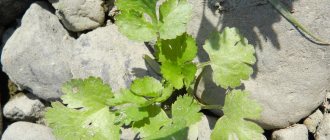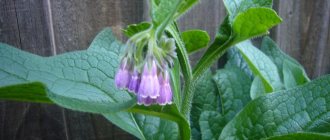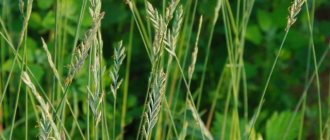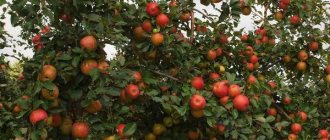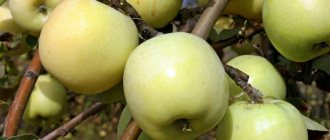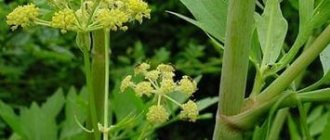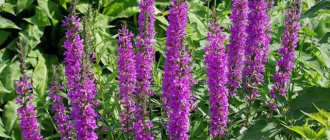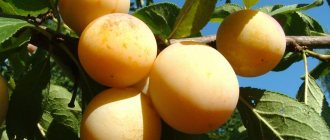Cloudberry: general description
Cloudberry is a semi-shrub or herbaceous plant from the Rosaceae family. The closest botanical relatives of cloudberries are blackberries and raspberries.
The scientific name of cloudberry chamaemorus literally translates as “earth mulberry,” and indeed, in their shape, these northern berries vaguely resemble mulberry fruits. However, unlike mulberries, which densely cling to tree branches, only one berry can grow on each cloudberry stalk. Cloudberries bloom, as a rule, in the second ten days of June, and the berries on them ripen by the beginning of August. Cloudberry flowers are very similar to wild strawberry flowers, but the berries themselves are small, round (no more than 1.5 cm in diameter), with a structure reminiscent of blackberries. The fruits that have barely set are green; as they ripen, they gain color and become yellow-red and “plastic” in appearance. Fully ripe berries acquire a pure honey-amber color and become incredibly fragrant and translucent when exposed to light.
Attention! The cloudberry harvest season is short. Due to the fact that the berries ripen very quickly, soften and become untransportable, it lasts no more than 9-13 days. For this reason, they try to pick cloudberries slightly unripe, and then store them indoors.
Since cloudberry sepals are a valuable medicinal raw material used to treat persistent cough, the berries are collected together with the green leaves surrounding their stalks.
cloudberry bush
Reproduction methods
There are 4 methods for propagating cloudberries:
- planting shrubs dug straight from the forest. In this case, choose a bush with the most beautiful large berries, carefully dig it up along with a small piece of soil and immediately place it in a paper bag or clay pot. You can plant the bush directly in the bag. This will protect the root system of the bush;
- cuttings, they can be cut in the forest, rooted in a greenhouse, planted in nutritious soil and covered with film. The length of the cuttings should be 12 cm. In the fall they can be transplanted to a permanent place;
- imported seedlings that can be bought at a gardening store;
- seeds, this option is the most unpredictable and often does not give results. Seeds are planted in the fall in open ground or boxes with substrate. Such a plant may differ from real cloudberries, and not for the better.
Cloudberry is a real godsend for humans, which gives the body many benefits and an amazing taste. And if you plant the plant at home, you can enjoy cloudberries all year round and improve your health.
What does cloudberry look like?
Cloudberry is a perennial plant reaching a height of 30 cm. It is not a shrub, but a herbaceous plant. The flowers are small and white. Blooms from late May to June. The berries are golden yellow in color when ripe. The taste of the fruit is sweet and sour. Upon examination, they are quite similar to raspberries and blackberries. The fruits are used for eating raw and for processing into jam, jam, and various compotes. The leaves of the bush are uneven. The fruits grow on the bush one at a time on a branch, and therefore it will not be possible to pick a whole handful at once.
Swamp berry grows in bushes and can be difficult to find. You should know that red is a sign of immaturity. In total, the northern harvest period is up to 14 days. During this time, you can collect several buckets of such vitamins. The optimal time for collection is morning or evening in dry weather. The fruits are collected with sepals, from which decoctions with healing properties are then made. Cloudberries grow in swamps, but are also close relatives of the well-known raspberry. If you pick the berries in a slightly unripe state, they will be better stored. You can use not only the fruits, but also the leaves of the plant in dry form.
Description
What is Cloudberry
Cloudberry belongs to the Rosaceae family and is a perennial plant. Interestingly, this berry has many names, including northern orange, arctic raspberry and others.
Northern peoples have many legends and folk tales associated with cloudberries. One of them tells the story of the dawn girl, who was famous for her bead embroidery. Her skill was known throughout the area. One day a north wind blew and scattered her beads all over the ground. From that moment on, the dawn girl walks through the tundra and swamps, trying to collect the lost beads. This story describes where the berry grows and explains another name for the plant - swamp amber. Cloudberries are often called the royal berry, as it was popular among the tsars and empresses of the Russian Empire.
Features of care
The basis for successful cultivation lies primarily in proper watering. You need to periodically add a little citric acid to tap or well water at the rate of 2-3 g per 8-10 liters of water. To avoid chlorosis, it is necessary to add to the soil for each square in the spring. m 30 g of sulfur powder. The soil where cloudberries grow should always be slightly moist, so regular watering is needed. Dry weather, summer heat, summer requires doing this every day.
Recommendation: to improve metabolic processes, it is advisable to use special mycorrhizal granules.
Currently, the manufacturer offers various preparations enriched with mycorrhizal fungi from the Glomus family, such as “Mikor Plus.” The introduction of mycorrhiza into the soil not only enriches it with useful elements, but also protects it from pathogenic microorganisms, maintains acidity at the required level, and saves water for irrigation.
You can apply granules at any stage of growth; just distribute the granules by hand near the plant and lightly loosen the soil to a depth of 10 cm. In spring, the plant can be fertilized with organic and mineral fertilizers; the space between the bushes is sometimes filled with pieces of forest moss.
Planting and caring for cloudberries
Planting in the garden
You can grow a cloudberry bush from seeds or by rooting cuttings, but this is a long and not always successful path. It’s easier to dig up a cloudberry bush in the forest or purchase a ready-made seedling from a well-established seller.
If you find a cloudberry bush with large tasty berries in nature, carefully dig it up in September along with a clod of earth, pack the root system in a paper bag, without removing it you can plant the plant in a new place: since replanting is quite a serious stress for the plant, it is advisable avoid causing additional injury to it by wrapping the roots in burlap and then unrolling them before planting. The top of the paper bag is wrapped in polyethylene to prevent the roots from drying out, but it is advisable to replant the plant as soon as possible.
- Hellebore: growing from seeds, types and varieties
Cloudberries grow well in moist, slightly acidic (pH 4.5-5), well-drained and fertile soils, in open areas illuminated by the sun. Dig a hole of the required size (approximately 50x50 cm) and fill it with a man-made “swamp”: line the walls of the pit with clay, roofing felt or thick film, that is, waterproofing material, and also lay a film with several holes on the bottom. After this, fill the hole with a mixture consisting of one part of forest litter containing the mycorrhizae necessary for the plant, with three parts of high-moor peat, compact the mixture and water generously: as a result, the level of the filler should be 10 cm below the edge of the hole. Place the root system in the hole directly in a paper bag (it will then rot), fill the rest of the space with the same substrate so that its excess rises in a small mound above the surface of the area, and water the bush. When the earth settles, the surface will level out.
How to care
Cloudberries planted before winter will come to life in the spring and will require regular and abundant watering, loosening the soil and removing weeds. Water for irrigation should be free of chlorine and warm. It is advisable to water the plant every evening, using 5-8 buckets of water for each m². From time to time, dissolve 2 g of acetic or citric acid in water for irrigation. If you mulch the planting with a thick layer of peat, then 2-3 waterings per week will be enough. Weeding and loosening the soil around the bushes is very important in the first 2-3 years of life, but when the cloudberry grows, it will not be afraid of weeds.
In the second or third ten days of May, flowering will begin, and you need to ensure that the flowers do not die from frost: you can cover the bush with spunbond at night.
In the second year of life, when cloudberry ovaries form, you should feed the plant with a solution of 1 tablespoon of the mineral complex in 5 liters of water. It is better not to use organic fertilizers.
Habitat
Cloudberry is an inhabitant of the high latitudes of the northern hemisphere. This forest shy prefers to settle in swampy clearings, old peat bogs and moss-covered bogs.
In Russia, cloudberries mainly grow in Karelia, Murmansk, Arkhangelsk, Pskov and Novgorod regions, the Komi Republic and the Yamalo-Nenets Autonomous Okrug, although isolated islands of this northern beauty are found in more southern regions, for example in the vicinity of Bryansk and Smolensk. Cloudberries also grow in Belarus, but there is so little of it there that it is listed in the Republican Red Book, but in the countries of Northern Europe, where cloudberries grow in large quantities, they are not only collected in the wild, but also cultivated on special berry plantations.
In what natural zone does cloudberry grow?
The natural habitat of cloudberries is the tundra. This is a cold-loving plant that grows comfortably in regions where winters are long and summers are very short. Feels great in the northern regions of the forest-tundra. Does not tolerate strong winds and heavy rains. Temperature changes are also detrimental to it. The crop tolerates frost better than sudden temperature fluctuations.
The plant prefers soils with high humidity and swampy soils. This beauty also grows in mountainous areas, on plains and mounds.
On which continents does cloudberry grow?
Russia is not the only country where cloudberries grow. She feels great in Finland, Sweden, England, Denmark, and Canada. Found in some states of America.
The plant is very popular in Sweden and is harvested from July to early October. Depending on the region, the berries ripen in the country in stages and even residents of many CIS countries come to harvest.
The northern plant has a huge number of beneficial properties, including vitamin C and strengthens the nervous system. The fruits of the northern beauty are a natural antioxidant that help restore strength and fight stress.
Where cloudberries grow in Belarus
Cloudberries are so rare in Belarus that they are listed in the Red Book of the Republic. It grows in the swamps of Belarus, but collecting it is prohibited. Cloudberries live in the natural zone of the Republic of Belarus only in swampy areas, where they spread out in a continuous carpet. Reproduction is facilitated by wood grouse, which, when eaten, spreads undigested seeds. This herbaceous plant is found in the following regions of Belarus:
- Vitebsk region.
- North of Minsk region.
It is important to preserve this species, since it is becoming increasingly rare in Belarus. The northern berry survives and reproduces with difficulty in these latitudes, since Belarus is not as cool as this product requires. The distribution area of cloudberries on the map increases precisely towards the northern regions.
Where does cloudberry grow in Russia?
Cloudberries grow in many northern regions of Russia. This is the tundra and forest-tundra, as well as the swamps and forests of Siberia, where there are suitable conditions for the growth and maturation of the plant. Despite the fact that the plant itself easily tolerates cold, it has a number of climate requirements. First of all, the plant does not like strong winds, which is why it spreads a carpet to make it easier to endure such weather conditions. Cloudberry feels great in the tundra, and therefore in Russia it is found in the Arkhangelsk and Murmansk regions, as well as in Karelia, the Vologda region and even in the Moscow region.
Cloudberries in the Leningrad region: time and places of collection
The Leningrad region is not a place with ideal conditions for marsh berries, but representatives of this plant are also found there. Where cloudberries grow in the Leningrad region is shown on specialized maps. Mass collection in the Leningrad region begins around the tenth of July. The best places to collect northern vitamins in the Leningrad region:
- Kirovsky district;
- Priozersky district.
You can get to rich places by train from Finlyandsky Station. The optimal transport is a car that will allow you to get to the most interesting and wealthy areas.
Where and when cloudberries ripen in Murmansk
Ripens towards the end of September. In the northern regions, which are closer to the Arctic, the timing may be slightly different. The fruits should be collected before frost occurs, as it does not tolerate frost and changes its taste after the first frost. The best cloudberries in Murmansk are collected along the roads that lead to Tumanny-Teriberka.
Since 75% of the Murmansk region is occupied by tundra and forest-tundra, this region is therefore considered popular for lovers of this plant. By the way, residents of the North use the berry to treat scurvy.
Where to collect cloudberries in Arkhangelsk
Arkhangelsk belongs to the northern regions of Russia with suitable climatic conditions and soil standards for the berries in question. Gathering places in Arkhangelsk:
- Primorsky district;
- Krasnoborsky district;
- Kargopol district.
You can simply drive a car and find places in the surrounding swamps. Photos of cloudberries from Arkhangelsk are distributed all over the Internet; the harvest there is usually good and ripens fully, since the climatic conditions are optimal.
Botanical description of the berry and chemical composition
Cloudberry is a squat plant, up to thirty centimeters in height. The root system is very branched. The roots can go down to two meters deep. The berry is a cross-pollinated plant; it produces male and female flowers. The leaves of the royal berry are small in size, jagged in shape, and green in color. Each berry is located in a closed sepal, which opens when the cloudberry ripens. The fruit is a composite drupe. It looks like a raspberry. The color of the berries is initially red, but as they ripen they become yellow and translucent. The color resembles amber. The berries are hard at first and become juicy and soft when ripe. The ripening period lasts 45 days. The taste of the fruit is sour-sweet, very delicate. Cloudberries bloom in May–June and are harvested in July. It is rich in vitamins and minerals.
It contains vitamins A, B, C, E and PP and organic acids:
From minerals;
It contains pectin and tannins, vitamin A carotenoids, dietary fiber, sugar, fiber and water.
Interesting Facts
- in Lapland and Finland, dear guests are greeted with cloudberry pies and exotic cloudberry liqueur;
- in the North, residents use cloudberries to prevent scurvy;
- a handful of cloudberries contains several times more vitamin C than citrus fruits;
- In terms of vitamin A content, berries are ahead of carrots;
- enjoying cloudberries is the last thing A.S. is talking about. Pushkin asked before his death;
- Cloudberries have been featured on Finnish 2 Euro coins since 1999;
- It is prohibited to collect unripe cloudberries in Norway;
- The cloudberry received the name “royal berry” because kings loved it very much, and dishes made from the fruit were often served at the royal table.
How to use it correctly?
Fresh cloudberries are consumed daily during the berry ripening season as an independent dish. It is very useful to eat soaked cloudberries; thanks to the activity of bacteria, its beneficial properties increase somewhat. In addition, properly prepared pickled cloudberries can be stored without deterioration in quality for about two years.
You can soak cloudberries with or without sugar. First, the berries are sorted, washed and allowed to drain off excess water. Large jars are filled to the shoulders and filled with cooled boiling water. They are tied with gauze folded in several layers and placed for 2-3 months in a cool place where the temperature is not higher than 2-5 degrees Celsius.
You can add a glass of sugar for each liter of boiling water, boil for 10 minutes, strain, cool and pour over the berries. If you have prepared a lot of berries, you can soak the cloudberries in small wooden barrels; in addition to sugar, you can add cloves and other spices to the marinade.
Advice: despite the pleasant taste, you need to follow moderation and not overeat; it is enough to eat 200 g of fresh berries at a time.
Compotes, preserves, and jams from cloudberries are prepared in the same way as from raspberries or blackberries. Currently, due to the reduction of natural plantations of this crop in many regions, it has been assigned protected status. Therefore, amateurs can grow cloudberries on their own.
Harm and contraindications of cloudberries
Cloudberries are not recommended for those who suffer from gastritis, ulcers and other diseases associated with high acidity, since the berry contains a large amount of acids and can aggravate the course of diseases. Due to its effect on the circulatory system, namely due to the participation of cloudberries in improving blood clotting, the berry is contraindicated for varicose veins, thrombophlebitis, its use can cause blood stagnation and the formation of blood clots.
It is not recommended to eat cloudberries for people with low blood pressure. The berry is not hypoallergenic, so it can cause allergic reactions if you are hypersensitive.
You must always remember that even healthy foods are consumed in moderation; overeating cloudberries can cause various disorders in the body.
Useful properties of cloudberries
Due to the high content of microelements, biologically active substances and vitamins, cloudberries:
- normalizes the functioning of the digestive system and suppresses the growth of pathogenic intestinal microflora; Cloudberry is useful for strengthening the immune system
- has a bacteriostatic effect, stimulates tissue regeneration and thereby promotes healing and cleansing of festering wounds and burns;
- produces a mild diuretic effect, which helps eliminate swelling of the lower extremities;
- accelerates metabolism, which, coupled with a diuretic effect, promotes weight loss in obese patients;
- improves the condition of the skin, mucous membranes and horny formations (nails and hair);
- effectively reduces blood pressure;
- stimulates the functioning of the immune system, thereby increasing the body’s resistance to the effects of adverse factors of various etiologies;
- increases the overall tone of the body, and thereby reduces the recovery time after a long illness;
- is an excellent anti-scorbutic agent, and also prevents the development of winter-spring vitamin deficiencies;
- suppresses the production of free radicals and thereby slows down the aging process of cells;
- helps reduce the level of “bad” cholesterol, increases elasticity and reduces the permeability of vascular walls.
Cloudberry for weight loss
Cloudberries are actively used in therapeutic and dietary nutrition. What makes it an ideal product is the combination of low calorie content and a composition rich in vitamins and microelements.
Northern berry is indispensable in dietary programs aimed at weight loss. Often the reason for the appearance of extra pounds is not poor nutrition, but a slowdown in metabolism. Because of this, food is not completely absorbed, and the energy obtained from it is not spent on the needs of the body and is stored in fatty tissues.
Also, due to defective metabolism, fluid stagnation is observed, which causes swelling of the face and limbs. Cloudberry helps to activate metabolism, and due to its diuretic effect it helps remove excess fluid and eliminate swelling.
Regular consumption of fresh berries and cloudberry decoctions increases the overall vitality of the body, improves complexion, quality of hair and skin, and helps remove heavy metal salts and other toxins from tissues. The “cloudberry” diet helps a person cope with stress and serves as a kind of natural course of antidepressants. There is no need to “eat up” a bad mood with buns and cakes, which means the number of calories consumed is reduced.
Why is cloudberry good for women?
Cloudberries are of particular value to the fair sex. This berry is an effective remedy for menstrual irregularities. In addition, under the influence of the substances contained in the composition, metabolism is activated, so when consuming it, you do not need to worry about the condition of your figure.
Cloudberry is also known for its cosmetic properties. Berry extract is often added to shampoos, creams, gels and other skin and hair care products. Such cosmetics are especially useful for girls with dry skin.
Cloudberries are rich in vitamin E, which has a beneficial effect on the health of women during pregnancy and the development of the baby in the womb. The presence of carotenoids helps slow down the aging process and provide protection from ultraviolet radiation. Due to the natural antioxidants contained in seed oil, they are often included in anti-aging serums, scrubs and peels.
Medical significance
Cloudberries are rich in microelements, especially hematopoietic ones - magnesium, calcium, potassium, iron, aluminum, phosphorus, cobalt, silicon, and vitamins C, B1, B3, PP, A.
Cloudberry fruits contain proteins, sugars, pectin substances, fiber, organic acids (citric ascorbic, malic, salicylic), anthocyanins, carotenoids, tannins, phytoncides, leukocyanins, leukoanthocyanins.
Cloudberry seed oil contains a large number of natural active components, the most valuable of which are antioxidants and omega fatty acids. Cloudberries contain the most important fatty acids: linoleic acid (omega 6), alpha-linoleic acid (omega 3), antioxidants (carotenoids, vitamin E), plant sterols.
Cloudberries contain 3 times more vitamin C than oranges. And it is involved in many biochemical processes, including regulating hydrogen transport. Maintains the colloidal state of the intercellular substance and normalizes capillary permeability. Cloudberries are superior to carrots in the content of provitamin A, which rejuvenates cell populations. The miracle cloudberry is a rich source of tocopherols, which accelerate the regeneration of damaged cells and participate in the most important processes of tissue metabolism. Since cloudberries contain a lot of potassium, they help protect against cancer and cardiovascular diseases.
In folk medicine, only the calyxes of flowers are not used: the roots and leaves are used as a diuretic, for kidney stones, vitamin deficiency, metabolic disorders, for colds, hemoptysis, and malaria. An infusion of leaves is used for internal bleeding, diarrhea, as an anti-inflammatory and wound-healing agent. The juice of the fruit has a strong bactericidal effect. They lubricate the areas of skin affected by scabies.
Cloudberry berries are consumed fresh, soaked and pickled, and used in medicinal and dietary nutrition. Cloudberries are used to make jelly, compotes, jams, liqueurs, wines and juices, and pickled cloudberries are a real delicacy.
The healing properties of cloudberries make it an indispensable component of medicinal cosmetics and hygiene products. It nourishes skin and hair tired from physical and emotional stress. Calms them in cold and hot weather, helps restore strength and function.
Essential fatty acids - linoleic and linolenic, contained in cloudberry oil, restore the epidermal-lipid barrier of the skin and moisturize it. As a result, the feeling of tightness disappears. Carotenoids, phytosterols and vitamin E give the skin additional protection from ultraviolet radiation and slow down the aging process.
Thanks to cloudberries, the skin is restored and renewed, filled with moisture, and becomes smooth and elastic. Nails become stronger and hair shines.
Cloudberry is used in dietary and therapeutic nutrition, for the treatment of cardiovascular and gastrointestinal diseases, burns and skin diseases, for heavy metal poisoning, as an antifever agent.
Cloudberry berries have antimicrobial, diaphoretic, antispasmodic effects. In terms of provitamin A content, cloudberries are superior to carrots. Cloudberry is a source of tocopherols, which are necessary for normal pregnancy and the birth of a healthy child. The fruits can be used as an aid in the treatment of vitamin deficiencies and hypovitaminosis. In addition, they have a diuretic effect. The berry is used as a thirst quencher, which is useful for colds. Cloudberries with honey can be given when feeding weakened patients. Cloudberries can enhance blood clotting and have a strengthening effect. However, for peptic ulcers of the stomach, duodenum and gastritis with high acidity, especially during an exacerbation, cloudberries should not be consumed.
The use of cloudberries in folk medicine
Sepals, roots and leaves of cloudberry are widely used in folk medicine. Before using them for the treatment and prevention of diseases, it is advisable to consult a specialist.
The best recipes using leaves, roots, sepals
Frequently used recipes:
- Tea to strengthen the immune system. Combine dry leaves with sepals in equal proportions. Take 1 tsp. collection, pour 1 cup of boiling water, leave for 10 minutes. Divide into 3 servings. Drink during the day.
- Anti-inflammatory decoction. Combine the chopped leaves and roots. Take 1 tbsp. l. mixture, pour 250 ml of boiling water. Place on low heat, remove after 15 minutes and strain. Add boiled water to bring the broth to its previous volume. Divide into 4 equal portions. Use within 24 hours. The product is useful for men and women suffering from inflammatory diseases.
- Cloudberry for cough. Before brewing the sepals, you need to take a glass jar with a capacity of 500 ml, put dolls on the bottom (if necessary, they can be mixed with leaves). Just pour boiling water over them, cover with a lid, and wrap them in a towel or scarf. After 5 hours, strain. Use 1 tbsp. l. during coughing attacks or 150 ml after each meal.
- Infusion to lower blood pressure. Finely chop the roots and leaves with a knife. Pour 0.7 liters of hot water. Cover with a lid and wrap thoroughly so that the liquid slowly releases heat. After a few hours, strain and squeeze out the cake. Take 100 ml between meals.
- A decoction for the treatment of cardiovascular diseases. Connect cloudberry dolls, roots and leaves. Take 3 tbsp. l. mixture, pour 500 ml of boiling water. Keep on low heat for 15 minutes, then remove and wrap with a scarf or towel. After an hour, strain and cool. Take three times a day, half an hour before meals.
The berries are used for culinary purposes to prepare healthy drinks and delicious dishes.
Benefits of leaves
Let us now look at the beneficial properties of cloudberry leaves:
- They are used in the fight against gout, edema and metabolic disorders, as well as against cystitis.
- Mixed with fish oil, the leaves of this plant are an excellent remedy for treating purulent wounds with blisters.
- This raw material is used against inflammation, to heal wounds and stop bleeding. It also helps with coughs.
- Cloudberry leaves have diuretic and astringent properties.
Here is the recipe for use: pour dried leaves with boiling water (1 tbsp per 400 ml of water) and infuse. It is also appropriate to add dry leaves to tea.
What is prepared from berries
Ripe cloudberries have a characteristic and memorable tart taste. It is eaten fresh, dried and frozen, and is also used to prepare various dishes. One of the simplest and oldest recipes of the northern peoples is soaked berries.
Northerners traditionally make jelly, jam, fruit drinks and compotes from cloudberries. Many housewives use it to make berry filling for cheesecakes, pies and other baked goods. In Finland, this berry is used to prepare the national liqueur, which is usually served with desserts.
Cloudberries go perfectly with all types of meat and baked fish. It can be included in sauces, toppings and thick syrups. A savory and aromatic dish is game marinated with pureed amber berries.
Cloudberries contain a lot of pectin, so they have a gelling property. Thanks to this feature, all kinds of jelly, marmalade and marshmallows are often prepared on its basis. In Scandinavian countries, northern berries are used to prepare liqueurs, liqueurs, tinctures, homemade wine and other alcoholic beverages.
Using cloudberries for medicinal purposes
It should be borne in mind that fresh cloudberries can be stored for only 2-3 days, after which they usually begin to ferment. After collection, it must first be selected and processed. Northern berry helps get rid of tuberculosis and cough. For this purpose, dried leaves of the plant are used, from which a berry decoction is made.
To improve appetite, it is recommended to drink cloudberry juice diluted with water in equal proportions. When dried, the berries effectively relieve inflammation. They contain ellagic acid, which slows down the growth of malignant tumors and prevents the development of cancer. They are also rich in vitamin A, which is good for vision.
Cloudberry tea has healing properties, which is an excellent restorative and tonic during the off-season, when the body is weakened by the fight against viral infections. However, you should not drink it uncontrollably. Drinking more than two glasses of this drink per day is considered to be exceeding the recommended limit.
Immunity
The high content of vitamins C and A makes cloudberries a very important product for the immune system. Want to know why? Vitamin C, for example, stimulates the production of white blood cells, also known as leukocytes, substances that protect the body from viruses and diseases. In addition, ascorbic acid is an antioxidant that neutralizes free radicals. The second powerful antioxidant vitamin known in science is vitamin A. It also protects the body from “pests”, strengthens its ability to resist viruses and slows down the aging process.
Blood circulation
Cloudberry berries contain many minerals important for health. There is also iron on this list. Why is this so important? If only because iron is the main component of the hematopoiesis process. The level of hemoglobin in the body depends on it. And hemoglobin levels directly affect the quality of blood circulation, the supply of organs with nutrients and, most importantly, oxygen. Complex process, right? And its adequacy depends on the small cloudberry. Well, we also need to remind you that iron is the best prevention of anemia. Although you probably already know this yourself.
Heart and blood vessels
Fat is not always bad. Just remember fish oil, which is considered one of the most beneficial substances for humans. And all because the main component of fish oil is Omega-3 polyunsaturated fatty acids. But fish is not the only natural source of healthy fats. It may seem strange to some, but healthy fats are also found in berries. Those same Omega-3 fatty acids are found in impressive quantities in cloudberry fruits. In addition, paired with another useful complex - Omega-6. To tell the truth, neither the first nor the second component is typical for berries. And this is the whole uniqueness of cloudberries. And now about the benefits of Omega substances. These components are the best medicine and prophylactic for the heart and blood vessels.
In addition, it has been proven that northern berries are able to remove excess cholesterol from the body, cleansing blood vessels and thereby removing excessive stress from the heart.
Detoxification
For many years, the fruits of this plant have been used as a diuretic when it is necessary to remove toxins from the body, eliminate excess fluid, salts and even fats. Berries are useful for cleansing the liver and reducing the load on the kidneys.
Antioxidants
In addition to vitamin C, cloudberries contain phytosterols and carotenoids that have antioxidant properties. But that's not all. Ellagic acid, a powerful antioxidant that protects against malignant tumors and premature aging, was also found in the sweet and sour cloudberry fruit. In addition, berries, according to researchers, have repeatedly proven their effectiveness in the fight against bacteria and viruses.
Digestion
Fiber-rich foods are ideal for improving the functioning of the digestive organs. Think you should only look for dietary fiber in dense fruits and vegetables like apples or beets? You are wrong. Juicy cloudberries, despite their delicate consistency, also contain fiber. This means that it also stimulates peristalsis, prevents flatulence and abdominal pain. And like other foods rich in dietary fiber, it improves the body's sensitivity to insulin and removes toxic substances and waste from the intestines. Phenolic compounds contained in cloudberries inhibit the proliferation of pathogenic organisms in the gastrointestinal tract.
Bones
And this may surprise some, but cloudberries are also good for bone strength. This plant is rich in magnesium, which serves as a key component for the body to adequately absorb calcium. Therefore, in order to eliminate the danger of osteoporosis from your life, to protect yourself from fractures and thinning of bones, you need to eat northern berries.
But people suffering from high stomach acidity should not forget that cloudberry is an acidic berry, and its juice irritates the mucous membrane of the digestive organs. People prone to allergies will also have to try the fruits with caution - this northern guest can cause unwanted reactions.
Composition of cloudberries
Composition of cloudberries
The northern berry consists of 85% water. Cloudberry fruits are saturated with organic acids, among which citric and malic acids predominate. The chemical composition of the berry is filled with thiamine, riboflavin, omega-3, omega-6 fatty acids, which increases its nutritional value. In addition, cloudberries contain a natural yellow dye.
Cloudberries in cooking
Recipes for delicious dishes and drinks that are healthy for the body:
- Jelly. Take 1 kg of ripe berries and grind until pureed. Pour 0.3 liters of water and put on low heat, after boiling, cook for 10-15 minutes. Strain through a sieve and cool slightly. When the broth becomes warm, add 15 g of gelatin, previously soaked in water. Stir thoroughly.
- Cloudberry tincture. Take 500 g of berries, put in a glass jar, lightly press with a wooden masher. Add 100 g of sugar, close the lid, shake and leave for 2-3 hours. When the fruits release juice, pour in 1 liter of vodka. Stir, close the lid and put in a dark place for 7-10 days (shake once a day). Strain through cheesecloth and squeeze. Distribute into bottles and seal tightly.
- Jam. Place 375 ml of water over low heat. Add 1 kg of sugar (this should be done in small portions, stirring the contents). Bring to a boil, wait until the sand is completely dissolved (about 5 minutes). Place 1 kg of fruit in an enamel bowl or other container for making jam, pour in syrup, bring to a boil and leave for 5 minutes. Remove from heat, cool, bring to a boil again and boil for 5 minutes. Rub through a sieve. Place the remaining mixture in syrup and cook for 5 minutes. Distribute into sterile jars and roll up. Place neck down and cool.
If the jam has fermented, you need to find out why this happened. The reason may be short cooking time, lack of sugar, use of damp jars or storage in a warm place.
Recipes
Infusion of cloudberry leaves
Pour 1 tablespoon of leaves with 1 glass of boiling water, leave for 30 minutes, strain. Take 1/4 cup 4 times a day as a diuretic.
Soaked cloudberries
Throw the sorted washed berries onto a sieve to drain the water, then pour them into the prepared container and add cold boiled water or syrup. Store soaked berries in a cool place.
Cloudberry marshmallow with apples
Pass 1 kg of apples and 1 kg of cloudberries through a meat grinder, add 2 kg of sugar and cook until the consistency of thick sour cream. Pour the resulting mass onto plywood trays lined with clean oiled paper, smooth it into a 1 cm thick layer and dry in the oven at low heat for 1-2 days.
Tea made from cloudberry and strawberry leaves
Take cloudberry and strawberry leaves in equal parts, dry in a well-ventilated area and use for brewing, like regular tea.
Cloudberry drink
For 3 teaspoons of jam: 1 tablespoon of pasteurized milk, 1/2 cup of unsweetened strong black coffee. Put cloudberry jam in a glass, pour in milk, stir and add strong black coffee. Serve the drink chilled.
Cloudberries with cream
Pour the sorted and washed berries with cream at the rate of 3 tablespoons of berries per 1 glass of cream, add granulated sugar or powder to taste.
Cloudberry jam
Wipe! kg of berries through a sieve, mix with 1-2 kg of granulated sugar and boil to the desired thickness.
Cloudberry jam
For 1 kg of berries: 1 kg of granulated sugar, 1/2 cup of water (recipe for all four methods). Sort out the slightly unripe (red) cloudberries, rinse well with cold water and let them drain. Pour the berries into the prepared syrup and cook until tender. Rinse the berries in a bowl, then under running cold water in a sieve, let the water drain. Pour water into the sugar, stir, keep on fire, stirring until the syrup boils, then add the berries and cook for 30 minutes. Then rub the berries through a sieve, place in a bowl and cook for 10 minutes. Cover the sorted and washed berries with granulated sugar and leave for 3-4 hours, then cook until tender in 1 batch. When hot, transfer the jam into heated dry jars and close with lids. Pour hot 65% sugar syrup over the berries, leave for 3 hours, then drain the syrup, boil, combine with the berries again and bring to a boil.
Rules for procurement of raw materials
Cloudberries, the beneficial properties and contraindications of which many people know, are collected in mid-summer (at this time of year it easily leaves the stalk). It is not advisable to use buckets and other large containers, since the berries are easily damaged and produce juice. When the fruits begin to turn yellow, they are picked, laid out in one layer in a dark place and left to ripen. They are turned over periodically to avoid rotting.
The best ways to preserve berries
To preserve berries, you can use different methods. The most effective are soaking and freezing.
Cloudberries in syrup
Rinse 800 g of fruits and drain in a colander. Place 800 g of granulated sugar in a saucepan and add 1 liter of water. When the syrup thickens, keep it on the stove for a few minutes. Pour the berries into the pan, stir, cook for 15-20 minutes. Distribute into sterilized jars and seal.
Soaked cloudberries
Place the berries in clean, sterilized jars and add boiled water at room temperature. Seal tightly and store in a cool place with an air temperature of +5...+10°C. In this state, pickled cloudberries can be stored for 6 months to 2 years.
Freezing
Rinse the berries and leave until completely dry. Transfer to a wide tray so that they are arranged in 1 layer. Place in the freezer. After freezing, divide into containers or bags.
Cloudberry honey
Place the berries in a glass jar and pour honey over each layer. Close the lid, but do not roll it up. Store in a cool place with air temperature up to +4°C.
Harvesting berries
Cloudberries need to be collected in July, when they are still yellow. During this period, the berries are easily separated from the sepals and are transportable.
We recommend reading:
Beneficial properties of blackberries - medicinal properties and contraindications for use. Cooking options and methods for storing berries (video and 100 photos)
The benefits of olives: composition, beneficial properties, calorie content and features of use in the diet (90 photos + video)
The benefits of currants - harm, beneficial properties, review of vitamins and minerals (110 photos and videos)
Collecting in bulk containers is not recommended, as under the influence of its own weight the fruits lose their size and, as a result, become compressed.
Ripe cloudberries have a delicate, instantly damaged skin. It is not possible to transport and store such berries. The collected unripe fruits should be spread out in a dark place in a thin layer so that they finally ripen.
To summarize, we note that the beneficial properties of northern cloudberries should convince everyone of the need to use it.
“Northern orange” can be eaten fresh, frozen or dried. But most often it serves as an ingredient for gourmet haute cuisine.
Cloudberries in cosmetology
Cloudberry extract, obtained from seeds, is often used in cosmetology. It is included in shower gels, shampoos, cleansers, creams, etc. The beneficial and healing properties of the oil are explained by the high content of valuable components: vitamins, antioxidants, fruit and fatty acids. Decoctions and infusions prepared from the leaves of the plant can be used to care for skin and hair.
Cloudberry berries are used for cosmetic purposes to improve skin condition.
The effects that are achieved with regular use of products from the plant:
- increasing skin elasticity and tone;
- elimination of inflammatory processes;
- hydration;
- slowing down the aging process, smoothing out fine wrinkles;
- elimination of swelling and rashes;
- improving skin color and evening out tone.
Cloudberry oil also improves hair condition: eliminates dandruff, improves growth, and stops hair loss.
Juice from the berries can be added to creams to enhance their effect on the skin. Decoctions and infusions of leaves are frozen in special ice trays and used for daily wiping of the face.
How to plant wild berries in the garden correctly
To ensure that the bushes take root in the garden, you need to dig a trench 30-40 cm deep. Cover the bottom of the trench with a film with holes - through them, excess moisture will drain into the ground.
The soil brought from the forest must be mixed with garden soil and placed in a trench. Water the soil generously, adding a little vinegar to the water (half a teaspoon per 9-10 liters of water).
Wild berry bushes should be planted in moist soil at a distance of about 20 cm from each other. Then pour water again.

